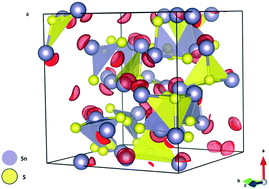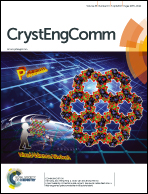A new cubic prototype structure in the IV–VI monochalcogenide system: a DFT study†
Abstract
A new cubic binary phase was recently discovered in the IV–VI monochalcogenides: tin monosulfide and tin monose-lenide. Here, we explored the possible materials design space for this phase across groups IV–VI. The structure and properties of this new phase, the π phase, including mechanical and thermodynamic stability and band gap width, were studied using density functional theory across the monochalcogenide systems of groups IV–VI. The structure of the new π phase was interpreted in terms of a distorted rock-salt structure, and the bonding between the 64 atoms of the unit cell was elucidated. It was found that the π phase is mechanically stable in germanium sulfide and germanium selenide and unstable in the tellurides. The energy differences between the π phase and the stable orthorhombic structures were very small, suggesting that the π phase could be thermodynamically accessible in monochalcogenide nanoparticles. The band gaps of the new phase were found to range from 1.0–1.4 eV, which may be attractive for a variety of photovoltaic and photosensing applications, in particular for GeS, which uniquely has a direct band gap in the π phase.



 Please wait while we load your content...
Please wait while we load your content...